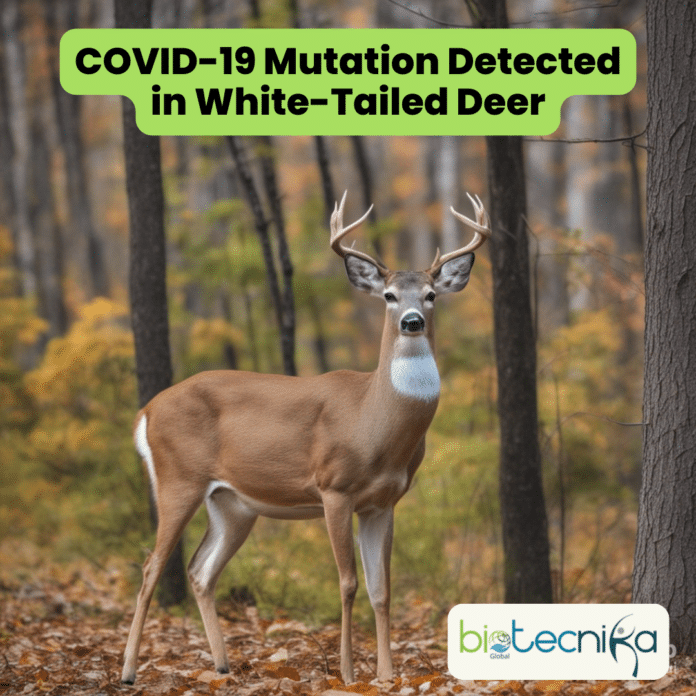“COVID-19 Mutation Detected in White-Tailed Deer: Implications and Insights”
The coronavirus responsible for the COVID-19 pandemic is still active and is showing some surprising behavior. Recent research has revealed that the virus is not only infecting humans but has also found its way into white-tailed deer, where it appears to be evolving. To understand this phenomenon better, scientists conducted a study in Ohio. They collected samples from the noses of 1,522 free-ranging white-tailed deer between November 2021 and March 2022. The results were eye-opening.
Among the sampled deer, 10 percent exhibited active SARS-CoV-2 infections, with at least one positive case identified in 59 percent of the tested counties. Moreover, analysis of blood samples from certain deer provided evidence of prior infections, suggesting that nearly a quarter of Ohio’s deer population had encountered SARS-CoV-2 at some stage. Genomic analysis suggested that at least 30 of these infections in deer were transmitted from humans. This finding challenges the notion that interspecies transmission is rare, suggesting that the virus can move between people and animals more easily than previously thought.
White-tailed deer might serve as a reservoir for the virus, potentially spreading it to other livestock, wildlife and even humans. It’s becoming clear that humans can contract the virus from deer, which is not entirely surprising. The coronavirus was found in deer near densely populated areas, but it wasn’t limited to urban locations. Positive cases were also found in rural parts of the state. Numerous deer displayed signs of contact with the highly transmissible delta variant, which was the prevailing strain in the human population during that period. The genetic composition of the delta variants detected in deer closely resembled those circulating among humans, strongly suggesting that the virus had transferred from humans to deer. This spillover resulted in clusters of infection among wild deer.
Interestingly, the virus appears to evolve more rapidly in deer than in humans, although the implications of this are not yet clear. While it’s possible that the virus could evolve further in deer and then return to infect humans, the study suggests that COVID-19 vaccination can still provide protection. In an experiment, hamsters exposed to coronavirus variants from white-tailed deer fared better when vaccinated compared to unvaccinated hamsters. This provides some reassurance regarding the effectiveness of existing vaccines.
However, even if the deer-related variants don’t directly threaten humans, they could potentially affect domesticated animals and wildlife. Approximately 70 percent of free-ranging white-tailed deer in Ohio have not been exposed to SARS-CoV-2, which raises concerns about the impact on other animal species.
In summary, the discovery of SARS-CoV-2 in white-tailed deer highlights the need for continued monitoring and research. While the virus’s behavior in deer raises questions, ongoing vaccination efforts remain a key strategy in our battle against COVID-19. The potential consequences of the virus COVID-19 Mutation Detected in White Tailed Deer is adapting to deer populations and its impact on other animals warrant further investigation.






